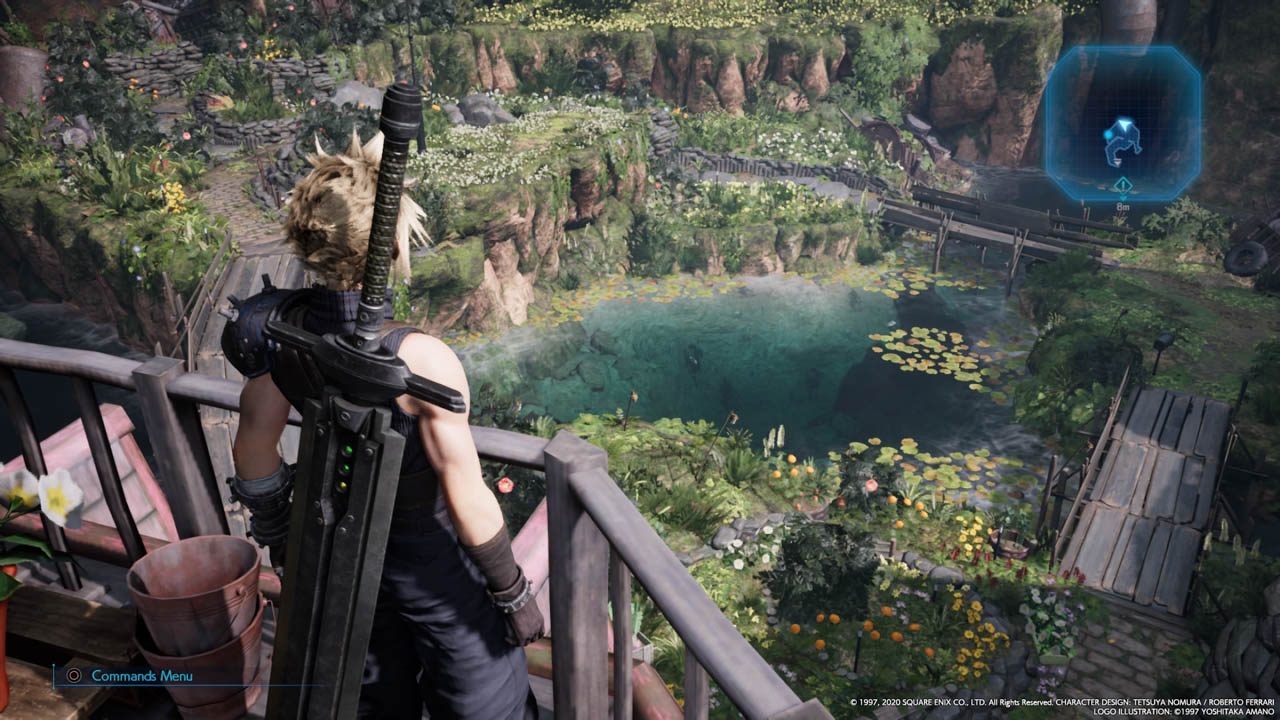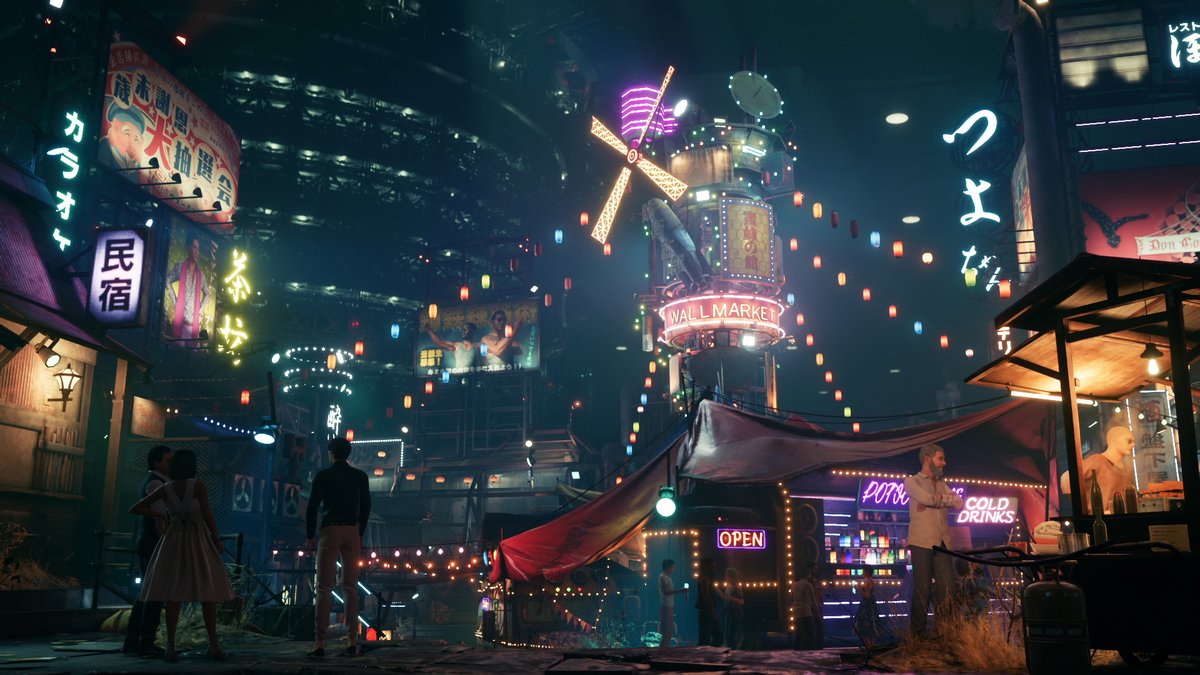Summary

Final Fantasy 7 Remake is a highly anticipated and well-executed retelling of the classic 1997 RPG. The story follows the original plot closely, but with added depth and detail to the characters and their motivations. The game’s mechanics are a combination of real-time action and strategic command-based combat, which offers a satisfying level of challenge and engagement. The game’s aesthetics are stunning, with detailed character models and lush environments that truly bring the world of Midgar to life.
FF7 Remake can found here on Steam: https://store.steampowered.com/app/1462040/FINAL_FANTASY_VII_REMAKE_INTERGRADE/
Story
Final Fantasy 7 Remake is a retelling of the original Final Fantasy 7 game, which was released in 1997. The story takes place in a world where a powerful corporation known as Shinra is extracting a mysterious energy source known as Mako from the earth, which is causing the planet to become increasingly unstable. The game follows the story of Cloud Strife, a former member of a powerful military organization known as SOLDIER, who joins a group of eco-terrorists known as AVALANCHE to fight against Shinra and uncover the truth about Mako and the planet’s fate. Along the way, Cloud and his allies will encounter a variety of characters, each with their own agendas and secrets, and will uncover a web of political intrigue and ancient secrets that threaten to change the course of history. (Trying to avoid spoilers)
Mechanics
Final Fantasy 7 Remake features a variety of mechanics that help to make the game engaging and fun to play. One example is the game’s combat system, which is a mix of real-time action and turn-based strategy. The game features a variety of moves and abilities that players can use to attack, defend, and heal. Players control one character at a time and can switch between characters during battle.

While the player only controls one active character at a time, the player can also command other characters to take on the same actions through a command-based menu that slows time after it pops-up, allowing players to combo different attacks, defence and healing actions using multiple characters, as seen below.
Players also have the ability to use special moves, called “Materia” which are powerful abilities that can be customized to fit the players needs. Some materia grants increased stats such as increasing one’s health points or critical chance, while others grant special abilities such as a unique attack after dodging or healing spells. These materia can be upgraded by simply playing the game while equipping the materia.
The game also features a “Weapon Core” system that allows players to switch a character between different combat roles such as offense, healing, and support, based on the weapon they choose to equip on each character. It is essentially a leveling and upgrade system, allowing players to customize their characters and improve their abilities through spending exprience points to upgrade their weapons. Players earn experience through defeating enemies, completing quests and solving puzzles. These experience points can be used to improve the characters health, magic and abilities.

The “Materia” and “Weapon Core” systems allows players to build their characters using the playstyle they like as well as to serve as an added layer of strategy on harder difficulties.
Aesthetics
Final Fantasy 7 Remake boasts strong aesthetics in a number of ways. One example is its detailed and highly-realistic character models and environments. The game uses advanced 3D graphics and motion capture technology to create highly-detailed and expressive character models, which are brought to life through realistic animations and facial expressions. Additionally, the game also features richly-detailed environments that are filled with interactive objects and richly-textured backgrounds that create a sense of immersion and realism.


Lens of the Hero’s Journey
The game makes use of it’s story to outline a Hero’s Journey. The Hero’s Journey has 12 stages,
- Ordinary World
- Call to Adventure
- Refusal of the Call
- Meeting with the Mentor
- Crossing the First threshhold
- Tests, Allies & Enemies
- Approach to the Inmost Cave
- The Ordeal
- Reward
- The Road Back
- The Ressurrection
- Return with the Elixir
FF7 Remake is the first installment of it’s trilogy, and includes the first 6 stages of the “The Hero’s Journey”, by including stereotypical elements in it’s story structure. It outlines how Cloud Strife, a cynical and disillusioned ex-SOLDIER for Shinra, acting as a mere mercenary, joins up with the AVALANCHE terrorist group to defeat SHINRA. He is reluctant to join them at first, but through the multiple jobs that he undertakes with them, overcomes many challenges and gains many allies both familiar and unfamiliar. This marks the beginning of Cloud’s Journey as a hero.
Lens of Juiciness
The game is well-designed in terms of “Juice” (dynamic feedback that rewards players for their actions). One example of “Juice” in Final Fantasy 7 Remake is the way the game rewards players for successfully executing combos in combat. As players chain together attacks, they build up a “combo meter” that, when filled, triggers a powerful “finisher” move that deals extra damage to enemies. This dynamic feedback, in the form of the growing combo meter and the satisfying payoff of the finisher move, encourages players to experiment with different combinations of attacks and to strive for higher combo counts. Additionally, the game also rewards players with different type of rewards such as experience points, items, and money. These rewards provides players motivation to keep playing and to try out different strategies in combat, which makes the game more engaging.
Another way that FF7 Remake offers juicy interfaces is through the materia and leveling systems outlined above. Through these systems, the player can create a certain playstyle for themselves through a unique combination of materia and leveling choices. Following which the players can test out these abilities during combat. This provides a continuous feedback loop for the player, informing them on what playstyles are most efficient or the most fun, allowing them to make more engaging choices during character customization.
Lens of the World
Through the Lens of “The World”, the game strongly builds a sense of immersion in the player, conveyed through detailed world-building and character development. . The game takes place in the city of Midgar, a sprawling metropolis that serves as the game’s primary setting. The game spends a significant amount of time exploring the city, depicting its various districts, and the different people who live there. The game also explores the political and social issues that arise in Midgar, such as poverty, pollution, and the exploitation of the city’s lower classes by the powerful Shinra corporation. This level of detail and nuance in the game’s setting creates a believable and immersive world that players can become fully invested in.
Additionally, the game also builds a strong sense of immersion through its character development. The game’s main characters, Cloud, Tifa, Aerith and Barret, among others, all have their own unique backstory, motivations, and personality. The game also explores the relationships between these characters, and how they change and evolve over the course of the story. The characters are complex and relatable, which helps to create a sense of immersion for the player as they are able to get to know the characters and understand their motivations.
Furthermore, the game also creates a sense of immersion through its use of cutscenes, voice acting and dialogue that convey a sense of continuity and realism. All this elements work together to create a believable and engaging story that players can become fully invested in, which is one of the key elements of the “The World” lens.
Lens of the Player
The game is also well designed through the lens of “The Player”, offering a range of difficulty levels and playstyles to appeal to different types of players.
One example of how Final Fantasy 7 Remake offers different playstyles to appeal to different types of players is through its difficulty settings. The game offers four difficulty levels: “Easy,” “Normal,” “Hard,” and “Classic.” “Easy” mode is designed for players who are new to the series or who want a more relaxed experience, with fewer enemies and less challenging combat. “Normal” mode is the default setting and offers a balanced experience for most players. “Hard” mode is designed for experienced players who want a greater challenge, with tougher enemies and more demanding combat. “Classic” mode is an additional difficulty level that is exclusive to the Remake, that emulates the gameplay style of the original game by introducing a more dynamic and strategic turn-based combat system.
This range of difficulty levels allows players to choose the type of experience that best suits their preferences and skill level, which makes the game more accessible and appealing to a wider range of players. Furthermore, the game offers players different playstyles by allowing players to customize their characters abilities, weapons, and spells, which allows players to tailor the game to their own preferences and playstyles.
Conclusion
Overall, Final Fantasy 7 Remake is a faithful and visually stunning retelling of the beloved original game that will delight both new players and returning fans. The game is an excellent example of how to take a classic game and make it feel fresh and exciting while still staying true to the original.
